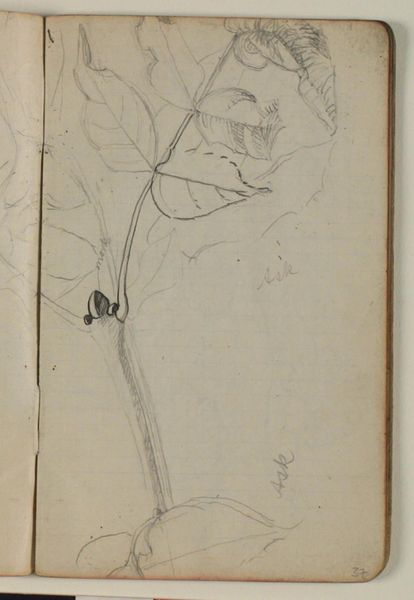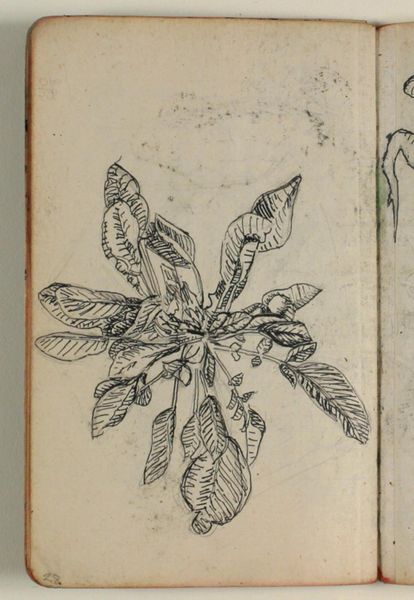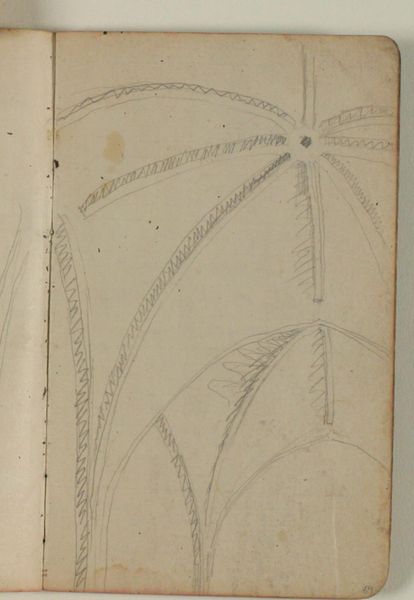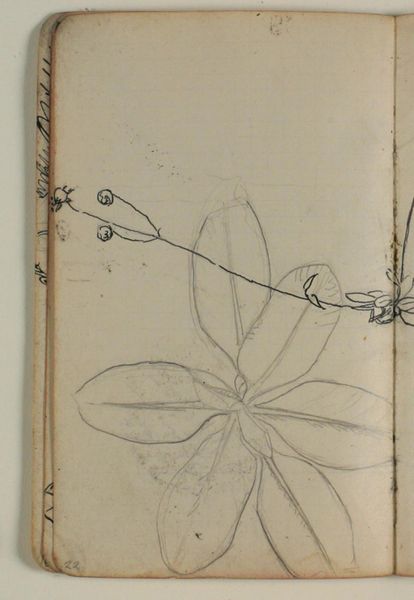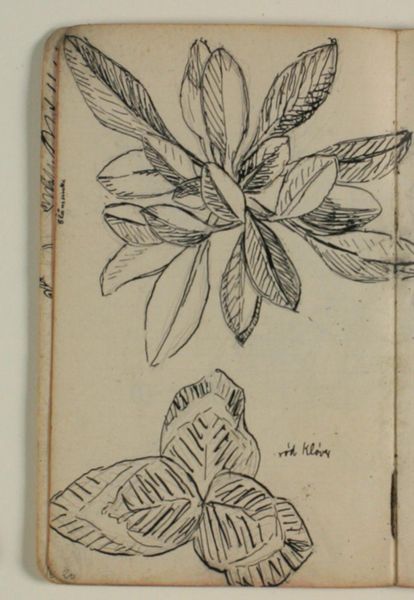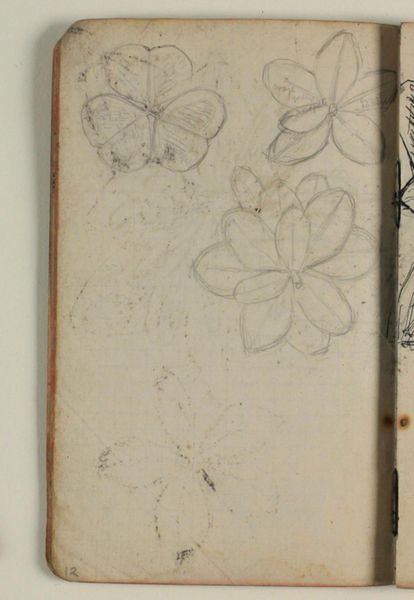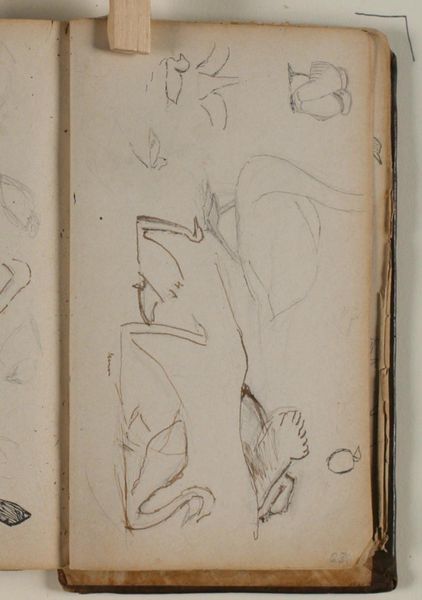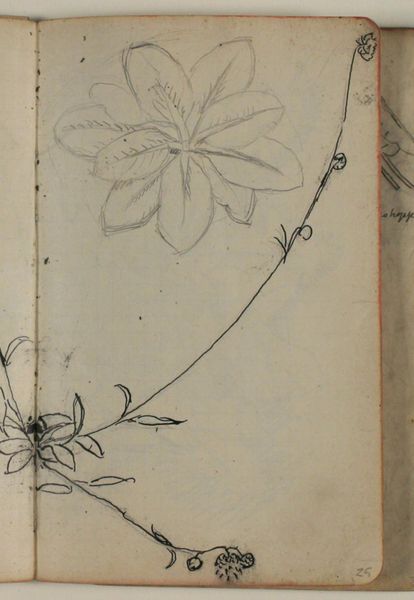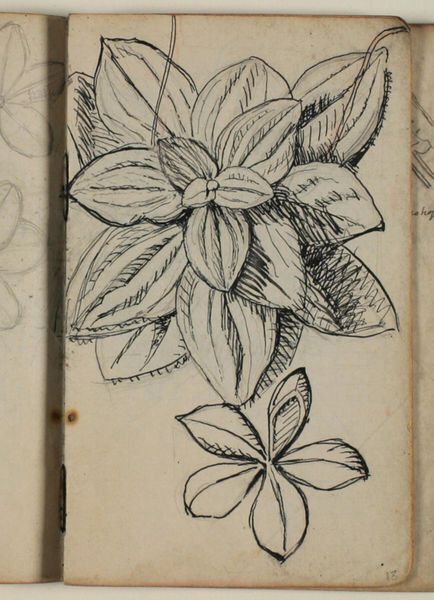
drawing, paper, pencil
#
drawing
#
organic
#
paper
#
coloured pencil
#
pencil
#
sketchbook drawing
#
academic-art
Dimensions: 161 mm (height) x 96 mm (width) (bladmaal)
Curator: Up next, we have Niels Larsen Stevns's "Studie af rødkløver, samt notater," a drawing made between 1906 and 1910, housed here at the SMK. It employs pencil and colored pencil on paper. What's your first take on this one? Editor: Intimate and delicate, like stumbling upon a forgotten page in a loved one's journal. The clover looks a little worn, though, a survivor, perhaps. Curator: Worn indeed, considering the medium! Notice the texture of the paper, its very substance suggesting a close relationship to natural, organic material, echoing the clover itself. How do you think the very process of creating this – the physical act of sketching with graphite – shaped Stevns’s artistic investigation? Editor: Absolutely. The sketchbook format, those hasty jottings, position the artwork as a raw material, or an exercise for understanding class and agrarian contexts that shaped rural communities. I'm curious how the choice of such ordinary flora speaks to broader social realities. Was Stevns perhaps examining working-class access to beauty, reframing what constitutes artistic subject matter? Curator: Intriguing question! Stevns, trained in academic art, demonstrates mastery in form here. This drawing moves beyond botanical accuracy; notice the subtle gradations of tone, achieved through layers of pencil work. Do these subtle textures underscore a tension between representation and lived, working realities? Editor: It's more than mere aesthetic exercise, isn’t it? By focusing on clover – a humble, easily overlooked plant – Stevns acknowledges the interconnectedness between humans and nature. He also, perhaps unintentionally, exposes agriculture as a tool to manipulate working-class groups through land. Curator: Your comment really highlights the layers here. Considering Stevns's choice of humble material like a sketchbook—what do you read into that regarding accessibility of art-making itself, challenging traditional notions of "high art"? Editor: Precisely! Perhaps he questions artistic and agricultural hierarchies by embracing the informal. In its incompleteness and humble subject matter, the sketch reminds us that access to land is unequal. Curator: What an insightful angle, highlighting the political resonance of natural, seemingly benign objects! The material limitations push him to use resourcefulness, and underscores his technical skill at the same time. Editor: Stevns, even through a simple botanical study, urges us to reflect critically. Curator: I concur—art’s value lies in unpacking seemingly simplistic sketches to reveal complex layers that influence communities—it pushes beyond simple observation into an active dialogue with both nature and each other.
Comments
No comments
Be the first to comment and join the conversation on the ultimate creative platform.
